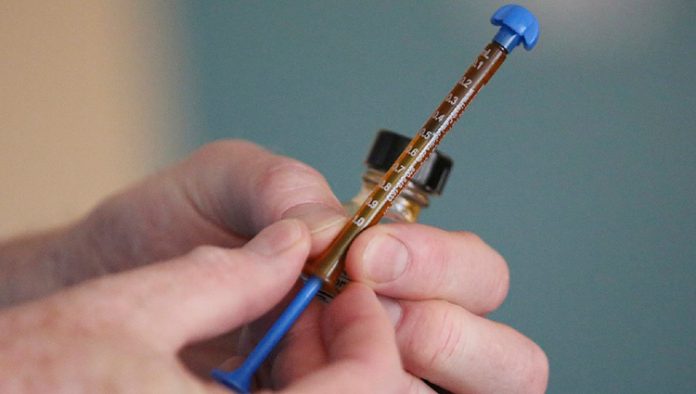As a combat veteran who has spent more than a decade working with severely injured veterans, both while in uniform and with numerous nonprofits, I can attest to the devastating effect that the over-prescription of opiate-based medications have had on our veteran population.
Data from the Department of Veterans Affairs, the nation’s largest dispenser of opioids, show that 20 veterans commit suicide each day. No doubt, the VA’s over-reliance on opioids has played a heavy hand in generating that unfortunate statistic as well.
I joined the military in 1980, at a time when drug use, and in particular the use of marijuana, was widespread. It clearly was a detriment to good order and discipline, and it posed serious safety risks. In May of 1981, a tragic mishap aboard the U.S.S. Nimitz destroyed sixteen aircraft and killed fourteen sailors. The ensuing investigation cited marijuana as the causal factor and became the catalyst that led to the Department of Defense instituting an all-ranks urinalysis screening program.
The effect of the policy was immediate, and in my opinion, the urinalysis screening program was the single most important policy change that the Pentagon implemented in its effort to professionalize what was only then becoming an all-volunteer force. By the time I finished college and returned to the military in 1988, it had been a radically transformed force capable of performing superbly, and did so a few years later during Desert Storm.
Today, as an international airline pilot, routinely flying 300 passengers between New York and Europe, my viewpoint on recreational marijuana remains unchanged. However, after working with literally thousands of some of the most severely injured veterans from Iraq and Afghanistan, my overall stance on medical cannabis has evolved.
The most prevalent medicinal compound that is found in cannabis is CBD, sourced from Industrial Hemp. Industrial hemp is a federally legal agricultural product that is grown in compliance with the 2014 congressional farm bill. Industrial hemp is not marijuana, but it is a type of cannabis that must contain less than 0.3 percent THC. CBD is one of more than 200 compounds that have been found in the cannabis plant species. Unlike THC, the well known high-producing compound which is prevalent in marijuana, CBD derived from hemp is non-psychoactive and provides the user with no associated high.
Last month, the World Health Organization released a report stating that CBD has “no addictive properties, is non-psychoactive, evinces no discernible side effects and shows great potential to serve as a viable form of treatment for a number of maladies.” And many researchers even feel it has great potential to wean users off of opiates.
Last month, the VA issued a statement that it will not study the positive medical effects from medicinal cannabis. Their justification was that marijuana is illegal under federal law. But this does not apply to CBD derived from hemp. The problem is that very few people understand the nuanced difference between medical marijuana, and CBD that is derived from industrial hemp, which is federally legal in all 50 states. The VA took advantage of this lack of understanding and is being disingenuous with this decision by lumping industrial hemp, which is legal, with Medical marijuana, which is not.
Last year, the CDC reported that 66,000 Americans died in the opioid crisis. That is more than twenty 9/11’s. If these veterans can finally find a safe, effective alternative to the “zombie cocktail” of opioids that have been forced on them, it is worth having the VA at least study CBD. If we really want to honor our Veterans, we should start by listening to them.














